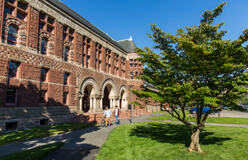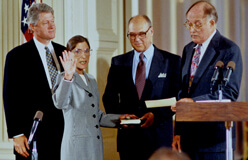Imagine this. Someone tells you that you can’t do something because you have big feet. Or because your legs are too long. Or your voice is too high.
These are not things you can change. So you would have two choices. You could give up and try to do something different. Or you could make doing that “something” your life’s work. Ruth Bader Ginsburg chose the latter.



